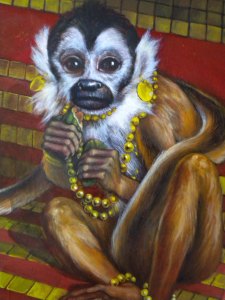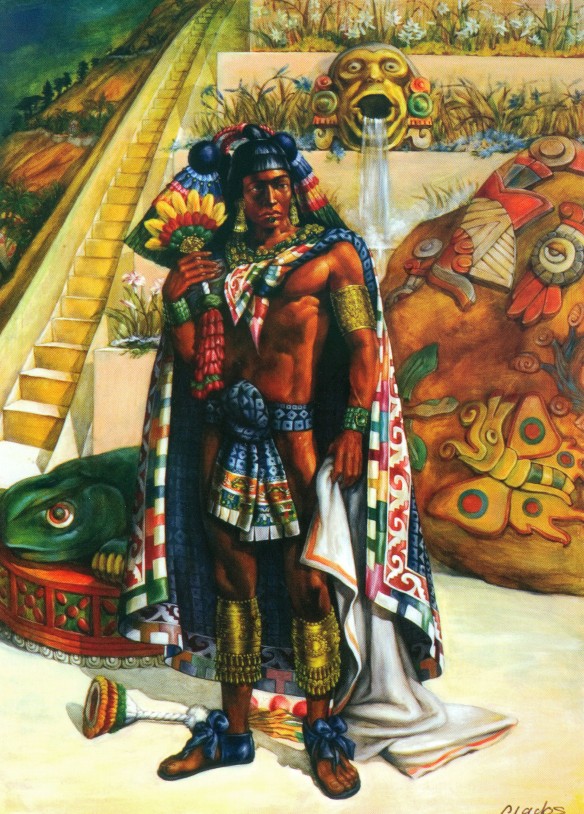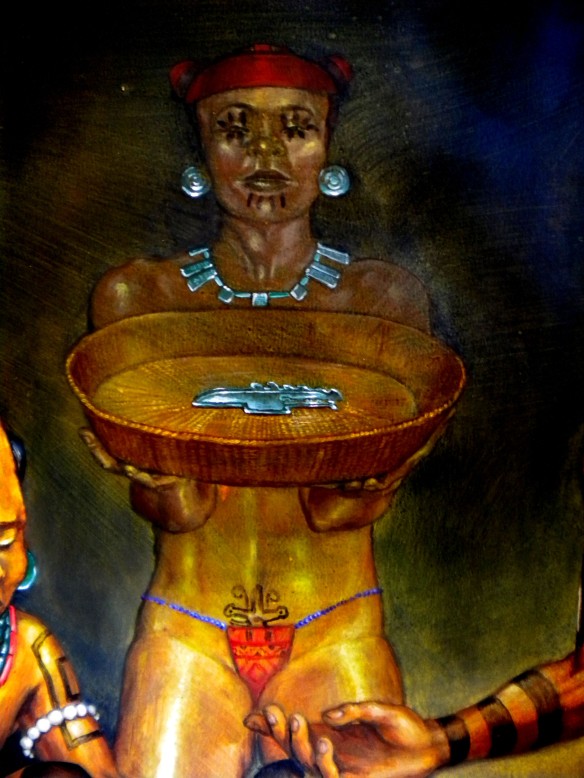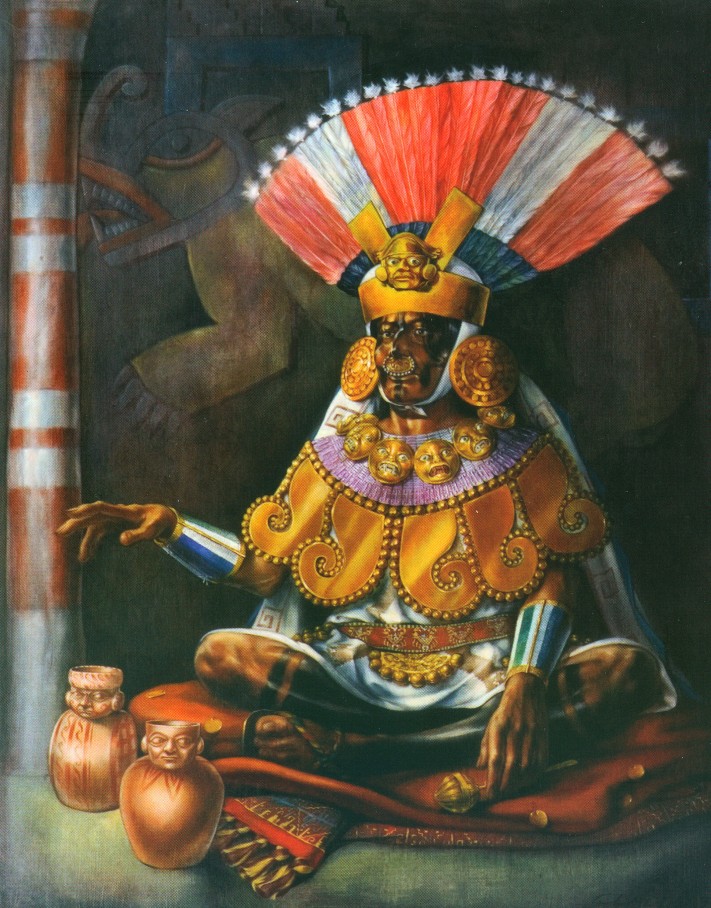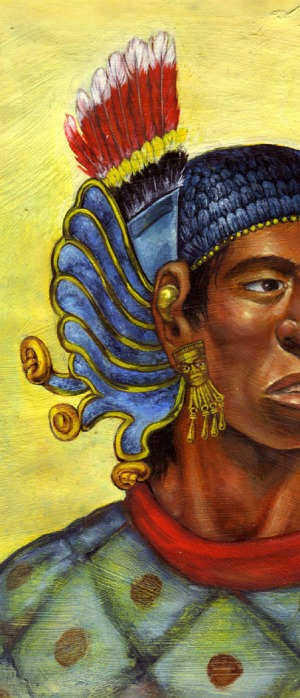Jaguars, Pampas cats and monkeys were often kept as pets in royal courts of Sican rulers. They were clothed and adorned with jewels and were regarded as personifications of rich harvest and fertility. This one, a squirrel monkey, is eating an avocado sitting on a textile onto which thousands of gold plaques are sewn.
http://coricancha.deviantart.com/art/Sican-Lord-AD-1000-Peru-436856495
https://www.academia.edu/1222402/Reconstructing_the_Pre-Columbian_World

